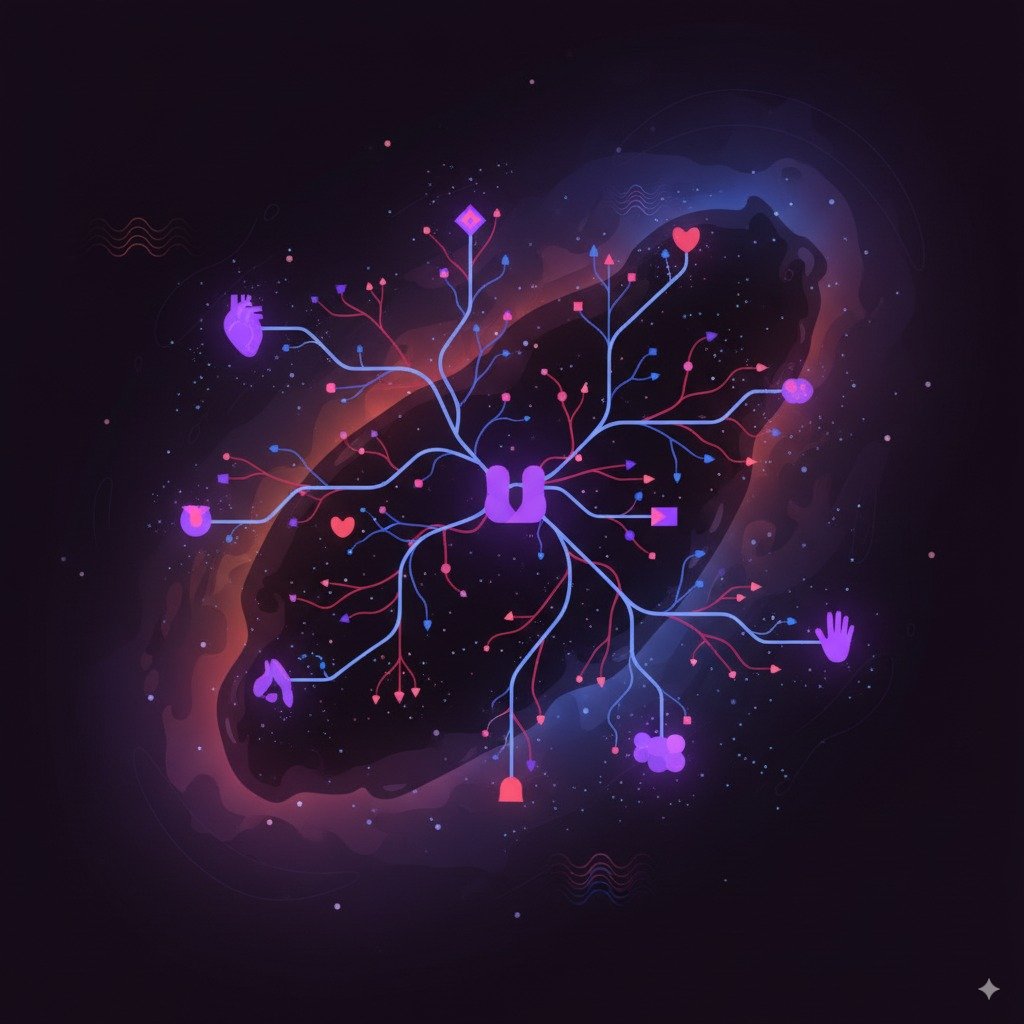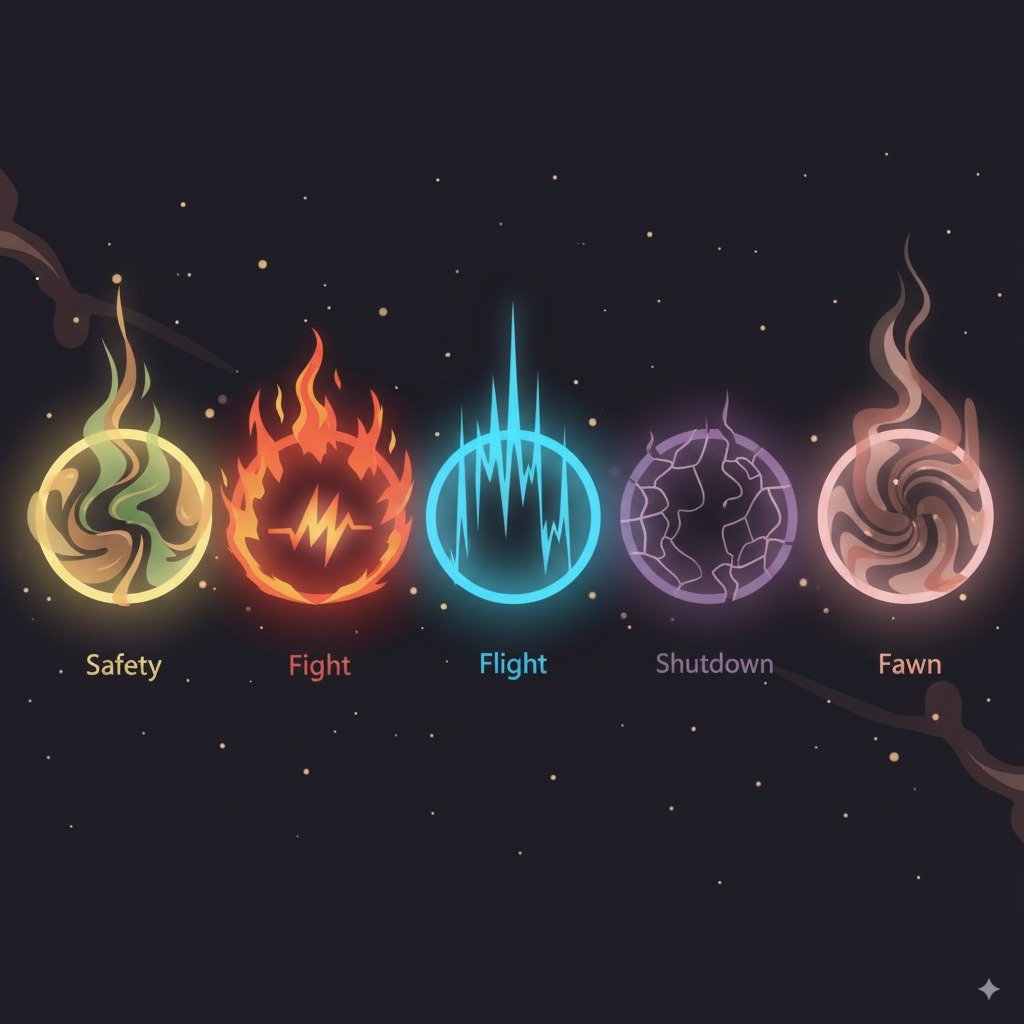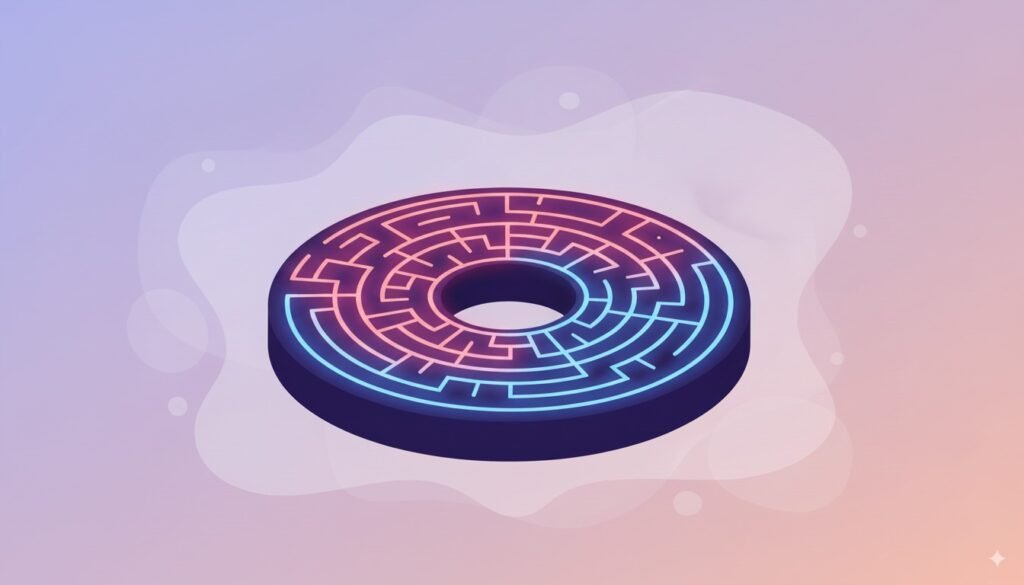Living in Constant Fear – How My Nervous System Got Stuck in Danger Mode
I haven’t healed yet, but I’ve started calming my nervous system with simple tools. That made a real difference in how I face each day. What I’ve learned is that fear and pain feed each other in a cycle and breaking that loop, even a little, has changed how I live with discomfort. It also made me look back and find the root. For many years, until I became a young adult, I lived in constant worry. When that state of tension becomes daily, the body never gets the chance to return to safety. Living under chronic stress leads to nervous system dysregulation, forcing the body to adapt in unhealthy ways and teaching it to treat even small signals as danger. For me, that is part of why the pain took root and stayed: the fear–pain cycle had become my daily reality.
The Fear-Pain Cycle: When Fear Trains the Body to Expect Danger
When pain shows up, fear often follows. We worry: what if it never goes away? What if it gets worse? That anxiety makes the body tense, breathing shallow and the heart race. The nervous system, built to protect us, mistakes this constant alertness for an actual threat.
The problem is that worry doesn’t just sit quietly in the background. Fear actually turns up the volume of pain. And then the hurt feeds the fear again. It’s a loop: fear makes pain worse, and pain makes fear stronger.
Here’s an analogy: it’s like being stuck in quicksand – the more you struggle (fear), the deeper you sink (pain).
Over time, this cycle trains the nervous system to stay in “danger mode,” even when nothing dangerous is happening. Muscles stay tight, the body stays restless, and the suffering lingers. Chronic anxiety ends up becoming the fuel that keeps chronic pain alive. Once the cycle begins, it doesn’t really matter which one started. The important part is breaking the loop so the system can return to balance.
Want to understand how fear evolves into anxiety and chronic anxiety – and what it does to the nervous system? I explain it through my experience here: From Fear to Chronic Anxiety: My Personal Story.

What the Nervous System Actually Is
The nervous system is your body’s communication network. It’s made up of the brain, spinal cord and all the nerves that branch out to every organ, muscle and tissue. Together, they carry messages back and forth, telling your body when to move, how to breathe, when to rest and even how to feel.
There are two main parts:
Central Nervous System (CNS): the brain and spinal cord, which act as the control center.
Peripheral Nervous System (PNS): the network of nerves throughout the body that delivers signals to and from the CNS.
Within the peripheral system is the autonomic nervous system (ANS), which automatically regulates things like heart rate, digestion and breathing. The ANS has two main branches:
- Sympathetic: activates fight or flight.
- Parasympathetic: restores rest and recovery.
In chronic pain, the balance between these branches often gets disrupted, leaving the system stuck in danger mode.
Nervous System Dysregulation vs. Central Sensitization: What’s the Difference?
Apart from the fact that pronouncing “central sensitization” is almost impossible for me, I also thought it was the same as nervous system dysregulation. I got quite confused until I found out what I’m about to share with you.
Nervous system dysregulation means the whole body is unsteady. You’re stuck in fight or flight instead of moving smoothly between stress and rest. It disrupts sleep quality, digestion, emotional balance, immune function and overall vitality.
Central sensitization means that the pain system itself gets amplified. Signals get turned up so that normal sensations feel painful, last longer or spread wider.
Here’s another analogy: think of your nervous system as the soil. If the soil is healthy, everything in the body can grow and function as it should. But if the soil is constantly dry, stressed or unstable, it changes what grows in it. Nervous system dysregulation is the soil being thrown off balance. It means your body is stuck in “danger mode,” unable to shift back into safety and rest. This affects more than pain; it shows up in stress, sleep, digestion, mood, immunity and energy. It represents a global disruption.
Central sensitization is the plant that grows in that soil. It’s the specific way the brain and spinal cord respond when the system has been in danger mode for too long: by turning up the volume on pain signals. In my case, years of stress, medical dismissal and ongoing back pain kept my “soil” in constant danger mode.
How They Connect
Nervous system dysregulation creates the conditions: a body stuck in survival mode, unable to reset. Central sensitization is the consequence: the pain system stuck on high alert. What binds them together is the fear–pain cycle: fear keeps the system agitated, which intensifies pain, and the pain itself fuels more fear. This is where dysregulation and central sensitization stop being separate concepts and start reinforcing one another.
Now that we’ve seen how they fit together, we can move on and dig deeper into the nervous system.

The 5 States of the Nervous System
Your nervous system isn’t just “on” or “off.” It constantly shifts between states depending on messages of safety or danger.
- Safe Mode (Ventral Vagal): The body feels secure. Breathing is natural, digestion flows, and the mind is open and connected. In this state, healing and repair are possible.
- Mobilized Mode – Fight (Sympathetic): The body prepares to confront a threat. Muscles tighten, the heart speeds up, and frustration or anger take the lead.
- Mobilized Mode – Flight (Sympathetic): The body prepares to get away. Energy surges, anxiety rises, and there’s a powerful urge to escape or avoid.
- Shutdown Mode (Dorsal Vagal): The system collapses when it feels overwhelmed. Energy drains, numbness sets in and the world feels distant or disconnected.
- Mixed States (Fawn/Functional Freeze): On the surface, you keep going – working, socializing, helping others. Inside, the body stays tense, caught between survival and exhaustion.
The goal isn’t to avoid these states; they are survival strategies. The challenge of dysregulation is getting stuck in one of the danger states (fight, flight, freeze, fawn) and struggling to return to ventral vagal (safety and connection).
Why the Nervous System Gets Dysregulated
Nervous system dysregulation doesn’t happen out of nowhere. It develops when the body spends too much time in survival states (fight, flight, freeze, shutdown) and loses flexibility to return to safety.
Some common roots include:
- Chronic or Early-Life Stress – Growing up or living in constant stress trains the system to stay hyper-alert.
- Trauma (Single Event or Ongoing) – Accidents, surgeries or assaults can shock the system. Ongoing trauma or abuse can leave the body wired for danger long after the events are over.
- Chronic Pain or Illness – Constant alarm signals from the body can keep the nervous system stuck in survival mode, even when tissues have healed.
- Emotional Stress & Suppressed Feelings – Grief, fear or anger that isn’t processed can keep the body tense and on guard.
- Burnout & Overload – Lack of rest, overwork or constant stimulation (noise, screens, deadlines) can push the system beyond its capacity.
- Relational Safety & Attachment Wounds – A lack of safety in relationships (neglect, abandonment, unstable caregiving) can root dysregulation deeply in the body.
- Lifestyle & Environment – Poor sleep, financial strain, unsafe environments or social isolation all add to the load.
These roots don’t affect everyone in the same way, but they all train the nervous system to see the world through the lens of danger. Over time, the system forgets how to recover its balance on its own; that’s what we call dysregulation.

Tools to Calm a Dysregulated Nervous System and Ease the Fear-Pain Cycle
Over time, I have discovered that calming the nervous system usually takes more than one approach. Each tool adds something different, and together they create the conditions for change. These four are the foundation: simple and powerful. You don’t have to start with all of them right away; beginning with even one makes a difference. With patience, you can build them up little by little.
Breathing & Relaxation
What it is: guided meditations, breathwork, and practices that activate the body’s rest-and-digest nerve (vagus nerve).
Here are two simple practices you can try to calm your system:
Breathing practice: The 4–6 Breath (2–3 minutes)
- Inhale gently through your nose for a count of 4.
- Exhale slowly through your mouth for a count of 6.
- Repeat for 5–10 cycles.
Why it helps: Extending the exhale activates the vagus nerve, signaling to the body that it’s safe and helping the nervous system shift out of danger mode.
Relaxation practice: Body Scan Reset
- Take a few minutes to notice your body, moving your attention from head to toe. The aim is simply to observe sensations- whether it is warmth, tightness or ease – without judgment. If any area naturally softens as you notice it, that’s a bonus. If it doesn’t, that’s fine too. The point is to give your body awareness and presence.
Why it helps: Builds awareness, reduces tension when possible and sends safety signals to the nervous system.
Safety Messages
What it is: gentle self-talk that reassures the body instead of alarming it.
Here are two simple practices you can try:
- A short phrase like “You’re okay, you’re safe.”
- A reminder such as “My body is allowed to rest now.”
Why it helps: Gentle words act like signals of safety. They calm the body’s alarm system, ease tension, and help the nervous system shift out of danger mode.
Gentle Movement
What it is: safe, low-impact exercises that gradually show the body movement is not a threat.
Here are two simple practices you can try:
- Gentle stretching or mobility exercises at a pace that feels comfortable.
- Short walks where you focus on moving with ease instead of pushing hard.
Why it helps: Gentle, consistent movement teaches the nervous system that activity doesn’t always equal danger. Over time, this rewires the body’s response to movement, reducing fear and tension.
Connection with Others
What it is: time with people who make you feel supported, understood, or simply less alone.
Here are two simple practices you can try:
- Spend time with a friend or partner who feels safe to be around.
- Talk with a therapist, support group or someone who truly listens.
Why it helps: Our nervous systems “co-regulate.” Being around someone calm and supportive signals safety to your own body, helping it shift out of danger mode more easily than if you try to do it alone.
Remember: What matters most is consistency. These aren’t quick fixes, but steady practice—layering breath, kindness, movement, and connection—gives your nervous system the best chance to find its way back to balance.
Go Deeper
I’ve created a full guide where I share the tools that made the biggest difference in calming my nervous system. It’s a living page that I am updating as I discover and test new resources, so bookmark it and keep an eye out for updates. Explore it here: Tools That Helped Me Regulate My Nervous System

What to Avoid if Your Nervous System Is Dysregulated
Adding tools helped, and so did stopping what kept me stuck.
- Catastrophic thinking: Believing that pain always means damage.
Unhelpful thought: “This pain must mean something is seriously wrong with me.”
Assuring thought: “Pain doesn’t always mean harm. My body can feel pain even when it’s safe.” - Avoidance & isolation: Pulling away from people or movement.
Unhelpful thought: “If I go for that walk, I’ll only make things worse.”
Assuring thought: “Gentle movement and connection can actually help my body feel safer.” - Over-reliance on medication: Depending only on pills for relief.
Unhelpful thought: “As long as I take my meds, I don’t need to do anything else.”
Assuring thought: “Medication helps, but pairing it with other tools gives my system more ways to heal.” - Ignoring stress signals: Overlooking the body’s warnings.
Unhelpful thought: “I just need to push through, even if I feel completely drained.”
Assuring thought: “Rest and listening to my limits are part of how I rebuild balance.”
What Helps (and What Doesn’t) in Nervous System Dysregulation
Knowing what supports healing and what holds it back, makes the fear-pain cycle feel less overwhelming. I’m still on this journey myself, but now I have tools instead of fear alone. The most encouraging part is realising the changes are in my hands. It means I’m not powerless; I can choose small steps each day that make my nervous system feel safer.
Healing the nervous system isn’t a straight line and that’s okay. Even if you start with doubt, these tools still work. Some days will feel harder than others, but each step helps your body relearn safety. I’m here to remind you: progress isn’t about being perfect, it’s about gently showing your system, again and again, that it can calm down and heal.
Be kind to yourself, stay curious and reach out if you have any questions for me!
If you got this far,
Get Support in Your Inbox
Subscribe to the newsletter and let me help you turn confusion into clarity. The PDF I have prepared is a guide that will help you organise all the elements of your condition: symptoms, treatments and impact, so you can understand your pain behaviour. This is truly important when it comes to explaining it to healthcare professionals, loved ones and yourself.
“Clinical Clarity Workbook – A map for precise diagnosis“
Until next time,
Alina

